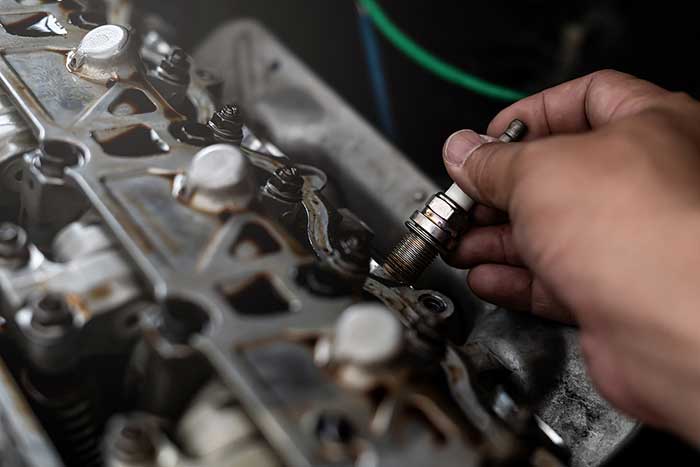Installing spark plugs correctly is essential for proper engine performance. But many people put them in incorrectly.
Luckily, you won’t have any problem replacing spark plugs if you remember the following tips.
Why Replace Spark Plugs?
Spark plugs are tough and usually last 50,000 miles or more. Many puzzling engine performance problems can often be traced to a spark plug problem, though.
How do you know the plugs may be the culprit? Common issues include:
- Difficult to start
- Engine misfires
- Rough idle
- Poor gas mileage
- Sluggish acceleration
However, there are several mistakes to beware of when replacing the plugs.
Using Just Any Spark Plug
Some believe if the spark plug fits in the plughole, it will work. That’s not true. Even if the plug seems to fit and has the correct heat range, the electrode may not work for that engine.
Improper plug electrode design can affect cylinder combustion and boost compression ratio.
Remember, spark plugs look similar, and it’s easy to purchase the wrong size and type if you aren’t careful. But measuring the plug threads and following the recommendations in your owner’s manual will ensure you get the correct spark plugs.
No Need To Replace Spark Plugs Regularly
If you don’t check your spark plugs often, severe engine performance problems could ensue. While spark plugs these days are made to last, it doesn’t mean you should never replace them.
Some manufacturers claim spark plugs may last 100,000 miles, but that’s only in perfect conditions. Ideal conditions are usually a dry climate with a lot of highway miles. Most of us don’t spend our time driving in the desert on the interstate.
Spark plugs in more common driving conditions wear out faster. So even if the spark plugs are supposed to last 100,000 miles, by 80,000, the plugs will have sustained wear and damage that can affect the engine performance.
Also, the longer the plugs are in the head, the more likely they are to get stuck.
Check your owner’s manual for when to change the plugs, and it’s best to assume you don’t drive in ideal conditions. That way, you are replacing the plugs well before the end of their life.
Thinking A Small Electrode Means The Plug Is Damaged
If it’s time to replace the spark plugs, don’t be surprised to see the electrode is tiny when you pull it out. Most of us are accustomed to copper plugs with larger electrodes.
But many modern vehicles come from the factory with iridium plugs with a small electrode that measures about .4 mm. These spark plugs are more popular with manufacturers because they last longer.
Pulling The Spark Plug Cables
Pulling on the cables is similar to pulling any electrical cord. Only pull on the plug part of the cord, or you can damage the internal wiring. Even if the spark plug cable looks fine, you may cause a loose connection that affects engine performance.
However, if the spark plug wire is broken, the boot will probably separate from the wire, so you can see the damage. Still, sometimes the damage will be impossible to see, and you’ll wind up with a mysterious engine misfire.
There are many gearheads replacing spark plugs that pulled on the plug cables. Then they had to take it to a mechanic and spend a couple of hundred dollars to find out the problem was a bad plug wire.
Replacing spark plugs regularly is essential for engine performance, so these tips will help keep your engine running smoothly for years.


